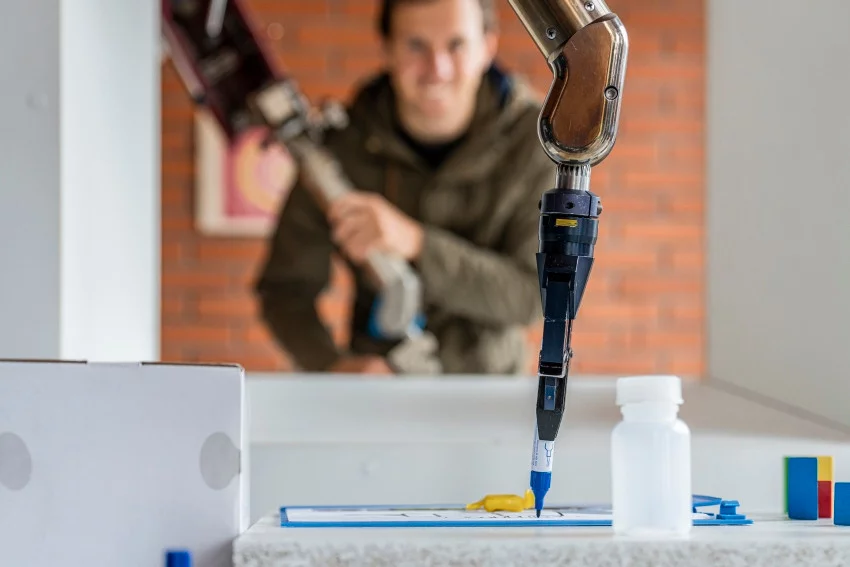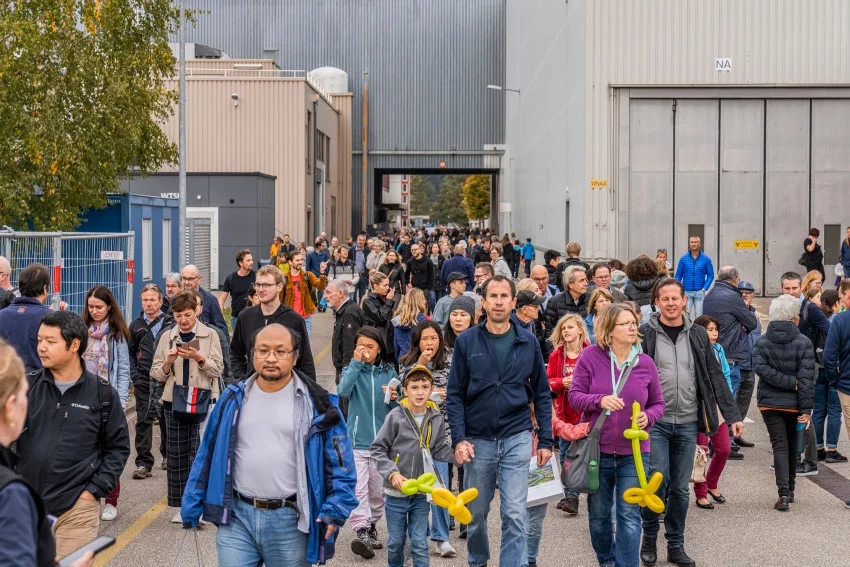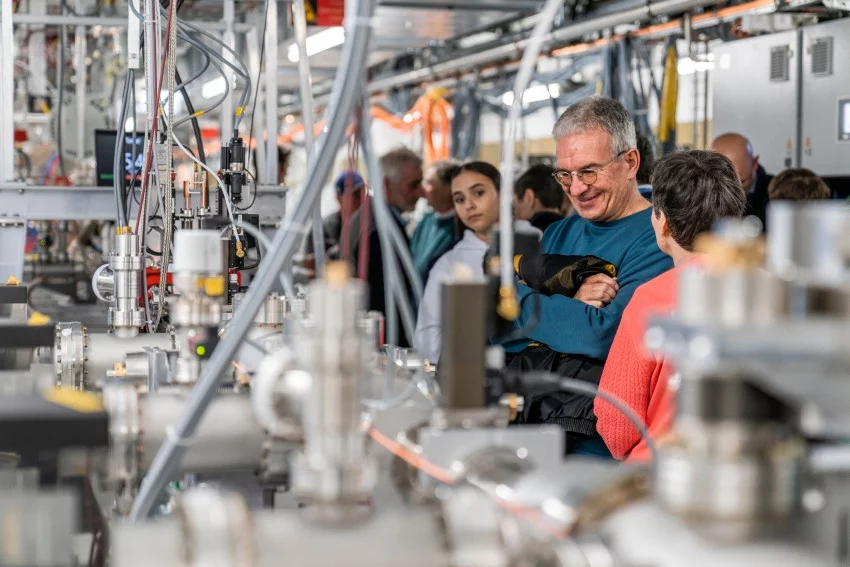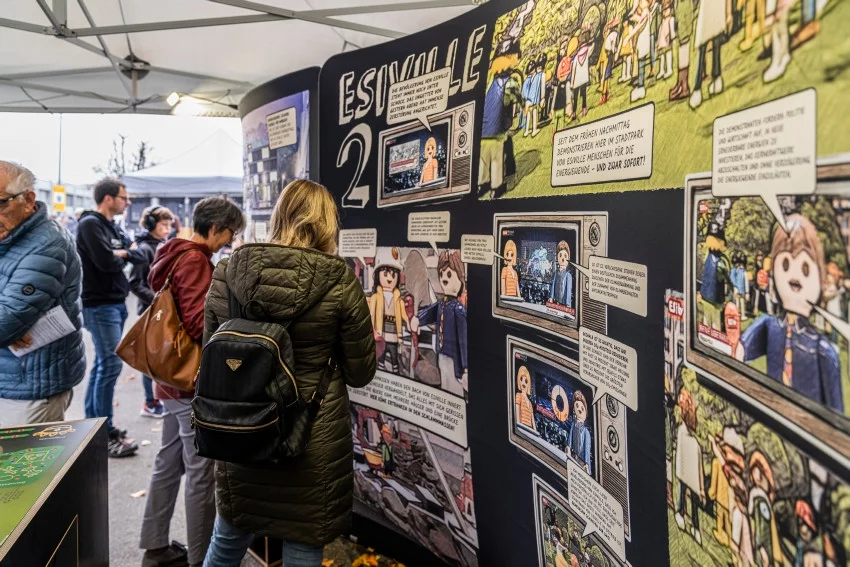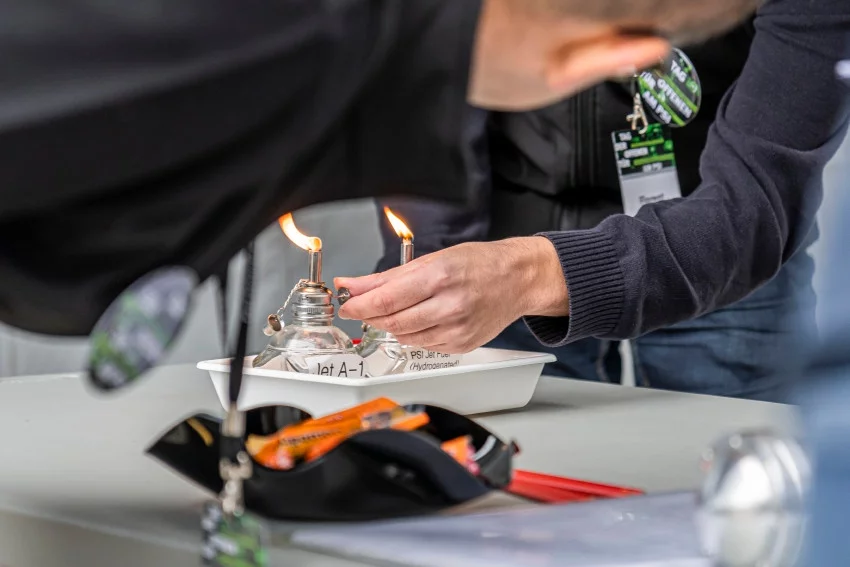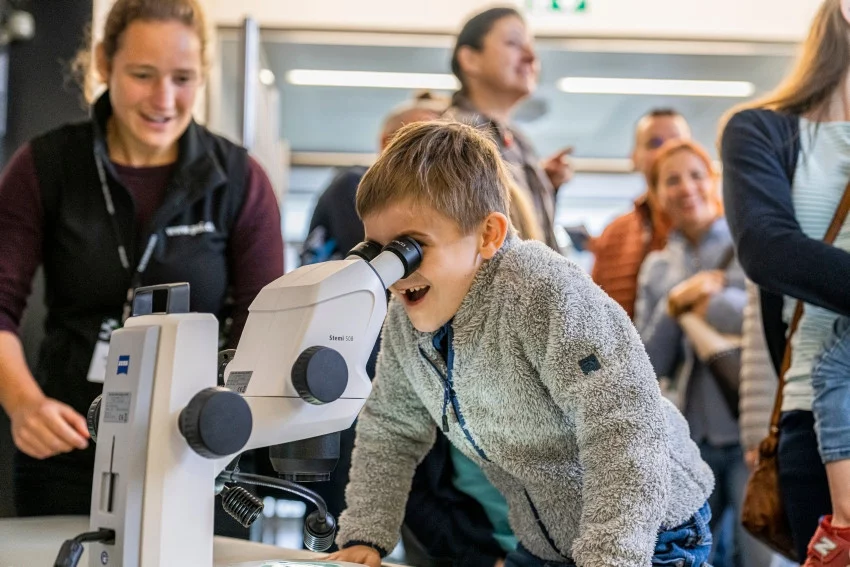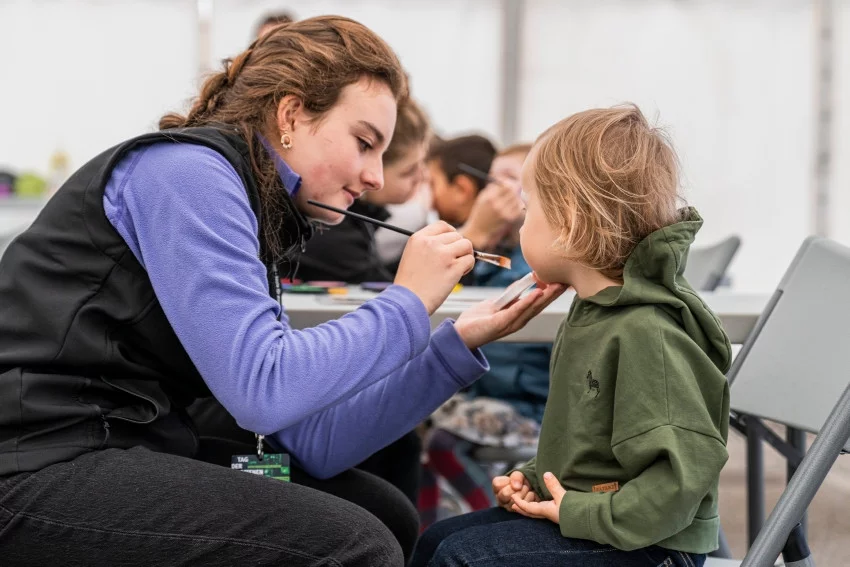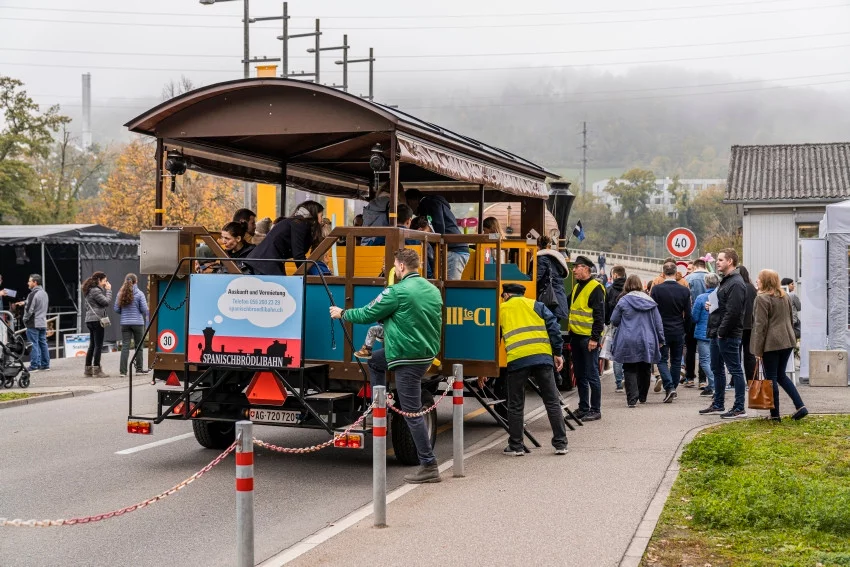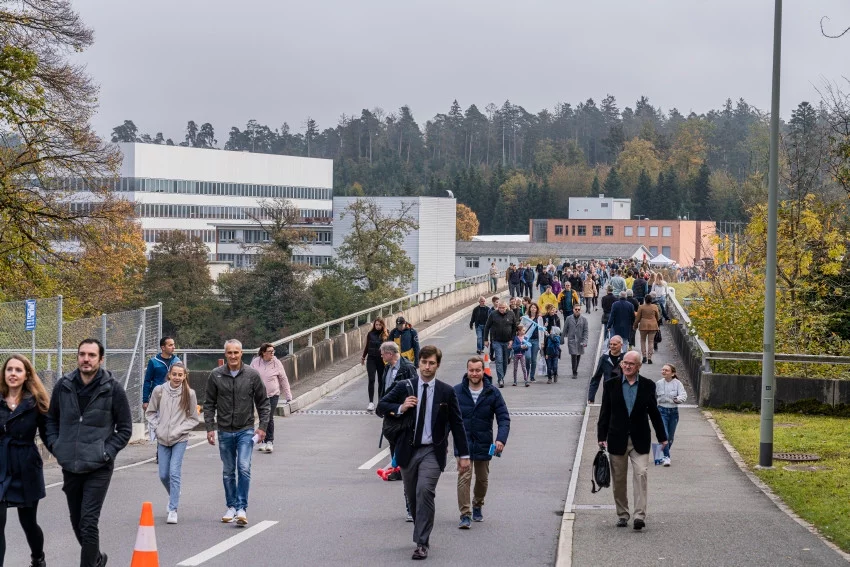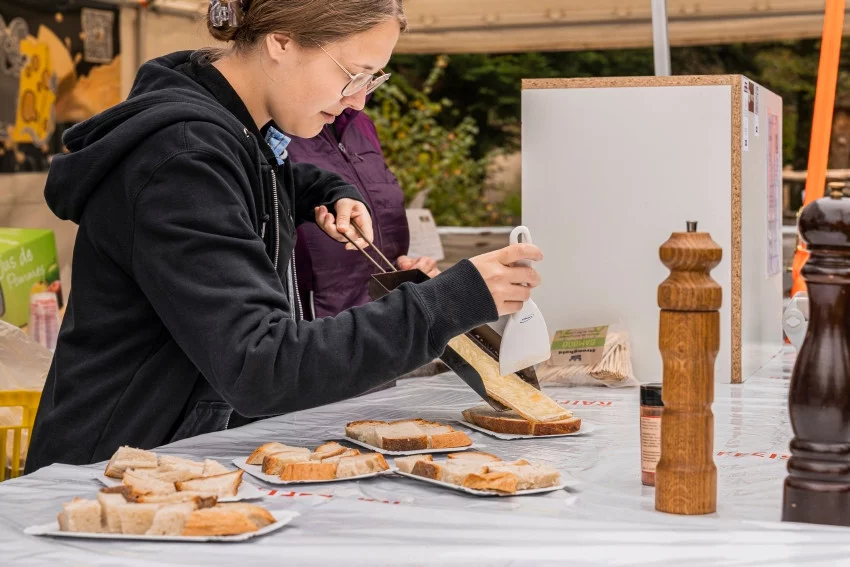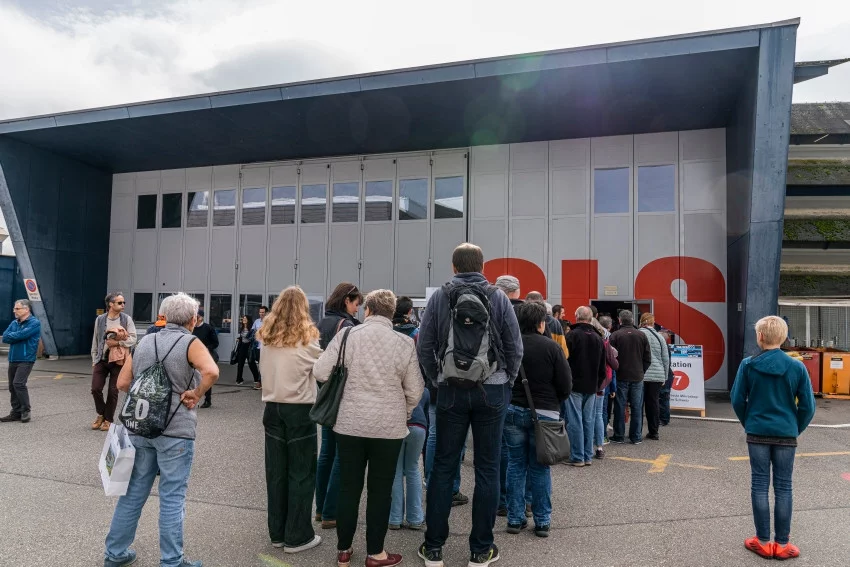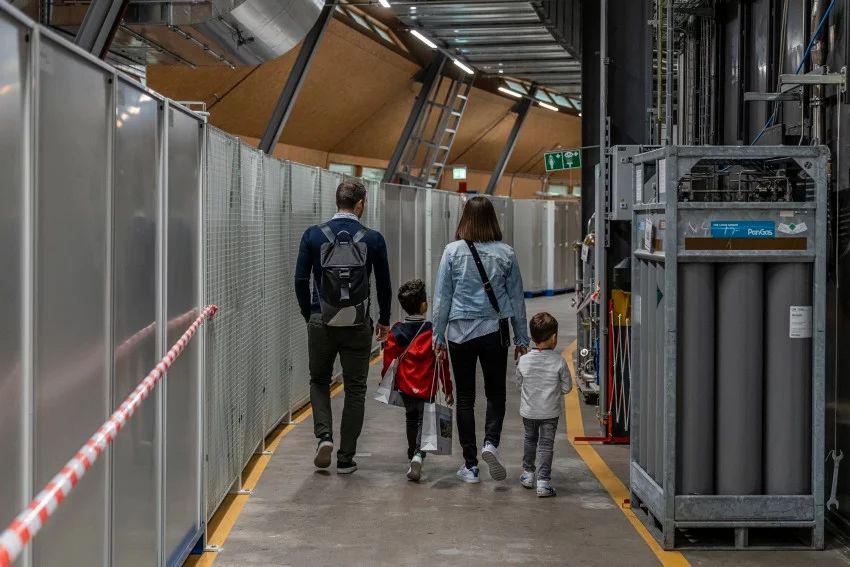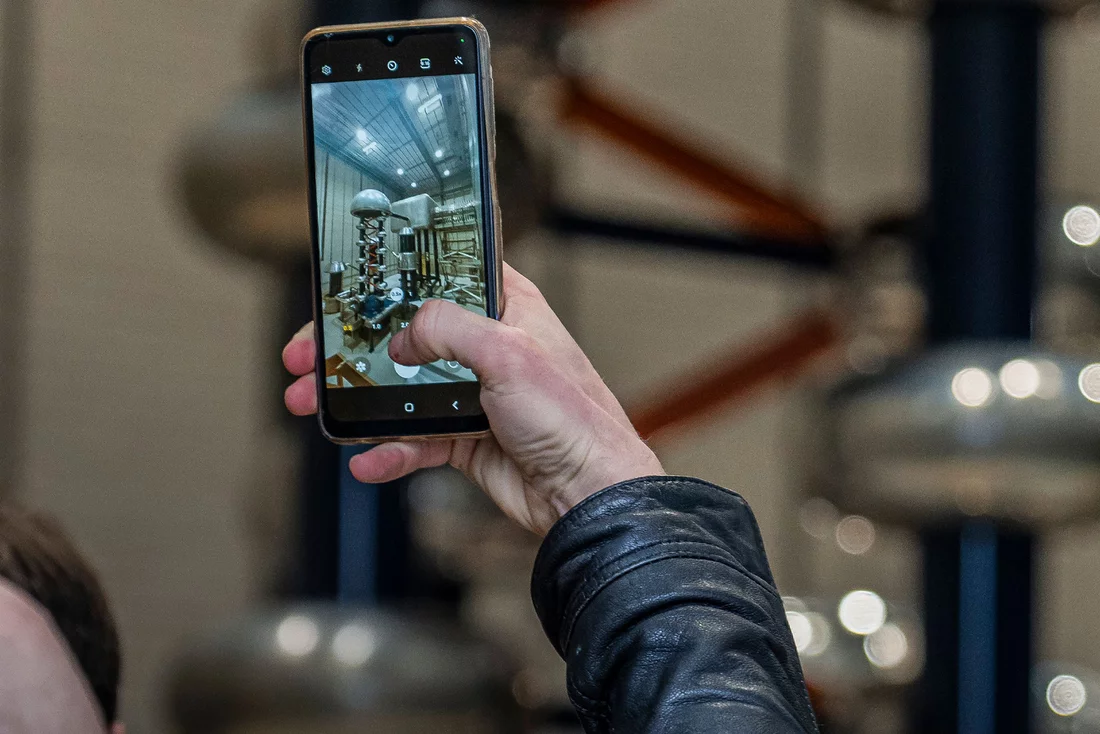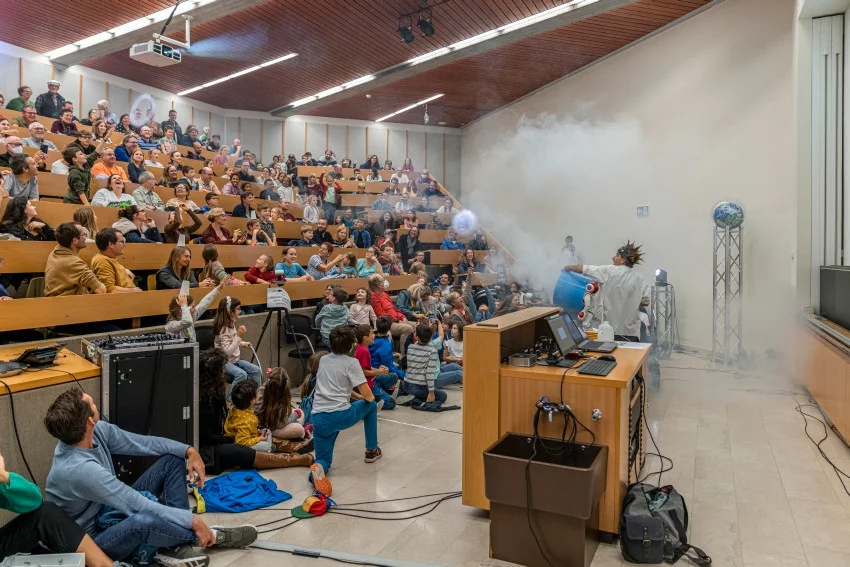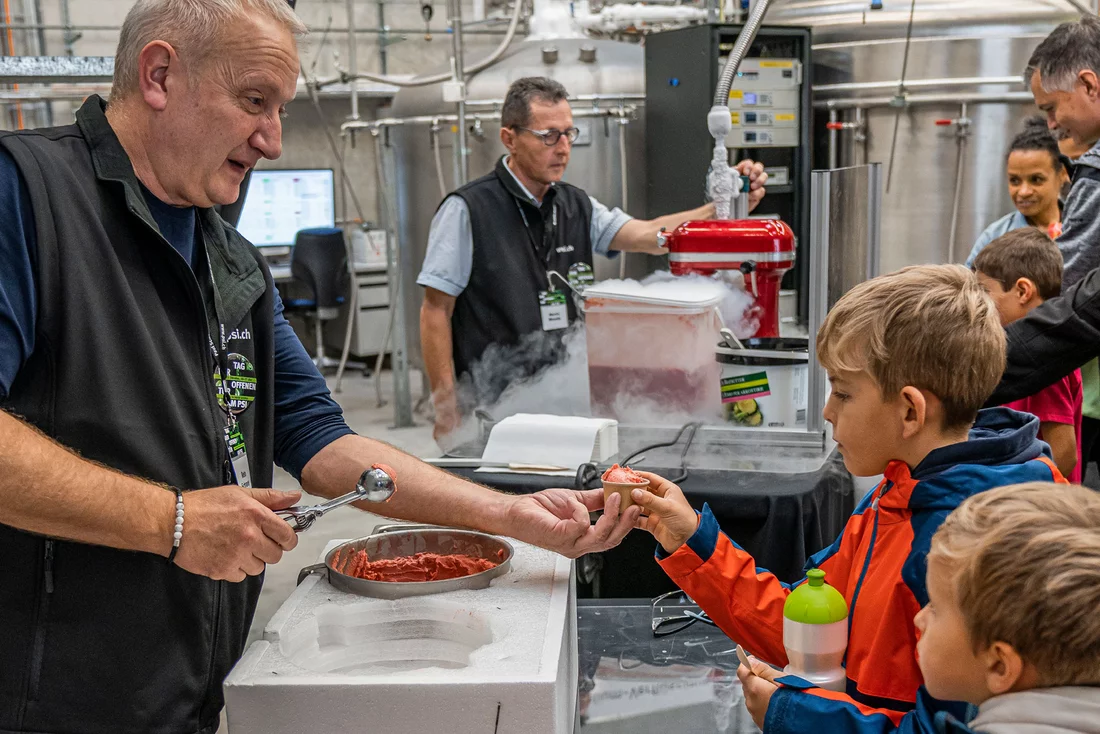Last Sunday, the Paul Scherrer Institute PSI opened its doors and invited visitors to attend its Open Day. At over 40 stations, visitors were able to experience the many different research areas at PSI first-hand, interactively and with many spectacular effects.
An overwhelming number of visitors attended. Very soon, there were no more parking spaces available on the PSI campus and various external park-and-ride facilities had to go into action. People poured out of the shuttle buses, which ran from the Brugg and Döttingen railway stations directly to PSI every 10 minutes, heading for the two main entrances. By the evening, no fewer than 15,000 visitors had been counted, who explored the 40-hectare research site with its many different stations.
There was certainly plenty to see – be it fascinating lectures by research scientists, face painting for the youngest visitors, exciting guided tours through the large research facilities, stimulating discussions with scientists, intricate feats of engineering, steaming liquid nitrogen and a steaming railway engine, music, dancing and delicious food – all tastes were catered for – the day simply wasn’t long enough to fit in everything that was on offer.
And because it was so wonderful, we would like to review this fantastic day and share a small selection of photographs with you.
We look forward to the next event, and if you don’t want to wait that long, you are of course welcome to drop by at our Visitor Centre at any time – whether for an individual visit or a guided tour.
Text: Paul Scherrer Institute/Benjamin A. Senn
Further information
Open Day 2022 – A Finger on the Pulse of Research – Homepage for the Open Day 2022
Visitor Centre psi forum – Homepage Visitor Centre
Contact
Martina Gröschl
Press Officer PSI
Communications Department
Paul Scherrer Institute, 5232 Villigen PSI, Schweiz
Telephone: +41 56 310 52 13, e-mail: martina.groeschl@psi.ch
Frank Reiser
Head of Section for Live Communication
Communications Department
Paul Scherrer Institute, 5232 Villigen PSI, Schweiz
Telephone: +41 56 310 29 53, e-mail: frank.reiser@psi.ch
Copyright
PSI provides image and/or video material free of charge for media coverage of the content of the above text. Use of this material for other purposes is not permitted. This also includes the transfer of the image and video material into databases as well as sale by third parties.

